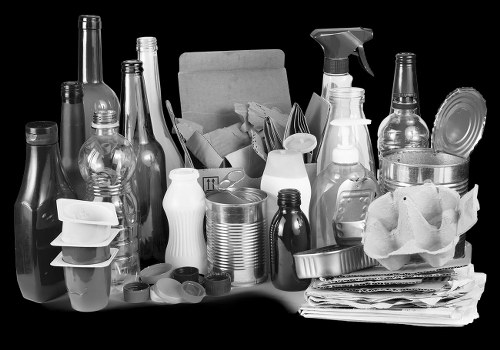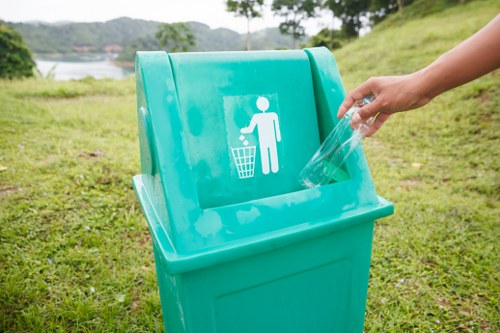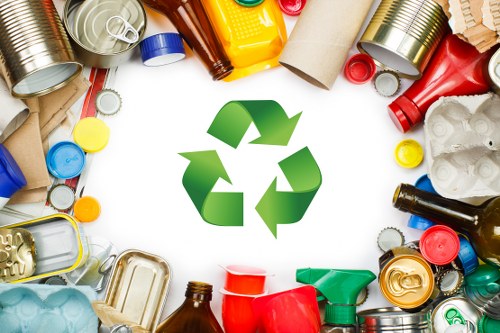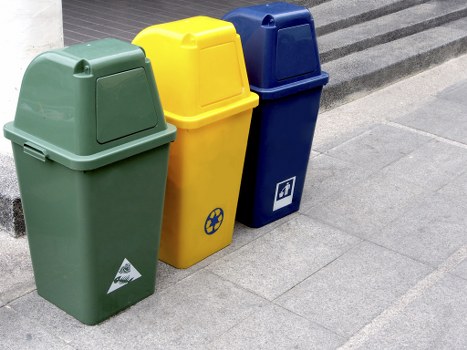White Goods Recycle in Furniture Disposal
Understanding White Goods Recycling

White goods refer to large household appliances such as refrigerators, washing machines, dryers, and dishwashers. As part of responsible furniture disposal, recycling white goods plays a crucial role in minimizing environmental impact.
Properly recycling these appliances helps reduce waste in landfills and conserves valuable resources by reusing materials. Additionally, recycling white goods can prevent hazardous substances, like refrigerants and heavy metals, from contaminating the environment.
Engaging in white goods recycling is not only beneficial for the planet but also aligns with sustainable living practices that many consumers are increasingly prioritizing.
The Importance of Recycling White Goods

Recycling white goods significantly contributes to environmental conservation by:
- Reducing the demand for raw materials.
- Lowering energy consumption in the manufacturing process.
- Minimizing greenhouse gas emissions.
- Preventing pollution from hazardous substances.
Moreover, recycling helps in creating job opportunities within the recycling and manufacturing industries, fostering economic growth while promoting sustainability.
By choosing to recycle white goods during furniture disposal, individuals and businesses can make a positive impact on both the environment and the economy.
Steps to Recycle White Goods Effectively

To ensure that white goods are recycled properly during furniture disposal, follow these steps:
- Identify recyclable appliances: Not all appliances can be recycled. Check with local recycling centers to determine which white goods are accepted.
- Prepare appliances for recycling: Disconnect and safely remove any hazardous materials, such as refrigerants, following manufacturer guidelines or seeking professional assistance.
- Contact a recycling service: Engage with certified recycling companies that specialize in white goods disposal to ensure responsible handling.
- Schedule pick-up or drop-off: Arrange for the collection of appliances or take them to designated recycling facilities.
Following these steps ensures that white goods are recycled efficiently, minimizing environmental impact and promoting sustainable disposal practices.
Choosing the Right Recycling Service

Selecting a reputable recycling service is essential for effective white goods disposal. Consider the following factors:
- Certification and compliance: Ensure the service complies with local regulations and holds necessary certifications for handling and recycling appliances.
- Environmental practices: Choose companies that prioritize environmentally friendly recycling methods and have transparent processes.
- Service offerings: Look for services that offer convenient options such as pick-up, scheduling flexibility, and comprehensive recycling solutions.
- Customer reviews: Research customer feedback to gauge the reliability and quality of the recycling service.
By thoroughly evaluating recycling services, you can ensure that your white goods are disposed of responsibly and sustainably.
Benefits of Recycling White Goods in Furniture Disposal

Recycling white goods during furniture disposal offers numerous benefits:
- Environmental protection: Reduces landfill waste and prevents pollution from hazardous materials.
- Resource conservation: Reuses valuable materials, decreasing the need for virgin resources.
- Energy savings: Recycling processes typically consume less energy compared to manufacturing from raw materials.
- Economic advantages: Supports the recycling industry and can lead to cost savings through recycling rebates or incentives.
Embracing white goods recycling is a proactive step toward a more sustainable and environmentally friendly approach to furniture disposal.
Regulations and Compliance
Understanding Legal Requirements
Recycling white goods is often subject to local and national regulations to ensure environmental safety. Key aspects include:
- Disposal standards: Guidelines on how appliances should be dismantled and recycled.
- Hazardous material handling: Proper procedures for removing and disposing of refrigerants and other harmful substances.
- Reporting and documentation: Maintaining records of disposed appliances to ensure compliance with environmental laws.
Adhering to these regulations is crucial for individuals and businesses to avoid legal penalties and contribute to environmental preservation.
Innovations in White Goods Recycling
Advancements in Recycling Technologies
Recent innovations have enhanced the efficiency and effectiveness of white goods recycling:
- Automated sorting systems: Utilize advanced technology to identify and separate materials more accurately.
- Improved material recovery: Enhanced methods for extracting valuable metals and components from appliances.
- Eco-friendly processes: Development of recycling techniques that reduce energy consumption and minimize environmental impact.
These advancements contribute to more sustainable recycling practices and promote the circular economy by maximizing resource reuse.
Consumer Responsibilities
Best Practices for Individuals
Consumers play a pivotal role in white goods recycling by:
- Educating themselves: Understanding which appliances can be recycled and the correct disposal methods.
- Proper maintenance: Keeping appliances in good condition to extend their lifespan and reduce the need for frequent disposal.
- Supporting recycling initiatives: Participating in local recycling programs and advocating for sustainable practices.
By taking these steps, individuals can contribute significantly to effective white goods recycling and environmental conservation.
Corporate Roles in White Goods Recycling
Businesses and Sustainable Disposal
Businesses bear a responsibility to manage white goods disposal sustainably. Key actions include:
- Implementing recycling policies: Establishing protocols for the disposal and recycling of appliances used in operations.
- Partnering with recycling services: Collaborating with certified recyclers to ensure responsible handling of white goods.
- Employee training: Educating staff on the importance of recycling and proper disposal methods.
By prioritizing white goods recycling, businesses can enhance their sustainability efforts, improve their public image, and comply with environmental regulations.
Challenges in White Goods Recycling
Overcoming Obstacles
Despite its benefits, white goods recycling faces several challenges:
- Cost barriers: Recycling processes can be expensive, deterring some individuals and businesses from participating.
- Lack of awareness: Many people are unaware of the importance of recycling white goods or the available options.
- Complex regulations: Navigating the legal requirements for appliance disposal can be daunting.
Addressing these challenges requires concerted efforts from governments, recycling companies, and the community to promote education, provide financial incentives, and streamline regulatory processes.
Future of White Goods Recycling
Trends and Predictions
The future of white goods recycling looks promising with several emerging trends:
- Increased automation: Advancements in technology will lead to more efficient recycling processes.
- Enhanced material recovery: Better techniques for extracting valuable materials from appliances.
- Circular economy models: Greater emphasis on designing appliances for easier recycling and reuse.
These developments will contribute to more sustainable and effective white goods recycling, further reducing environmental impact and promoting resource conservation.
How to Get Started
Initiating Your Recycling Journey
Begin recycling white goods by taking the following steps:
- Assess your appliances: Determine which white goods you need to dispose of and their recyclability.
- Find a recycling provider: Research and select a certified recycling service that meets your needs.
- Schedule disposal: Arrange for the collection or drop-off of your appliances.
- Promote sustainable practices: Encourage others to recycle white goods and advocate for environmentally friendly disposal methods.
Starting your white goods recycling journey not only benefits the environment but also sets a positive example for your community.
Conclusion
Embracing Sustainable Disposal
Recycling white goods is a critical component of responsible furniture disposal. By understanding its importance, following best practices, and overcoming challenges, individuals and businesses can contribute to a more sustainable future.
Embracing white goods recycling helps protect the environment, conserve resources, and support economic growth. It's a proactive step towards minimizing waste and ensuring that valuable materials are reused effectively.
Contact us today to learn more about how you can incorporate white goods recycling into your furniture disposal process and make a positive impact on the planet.